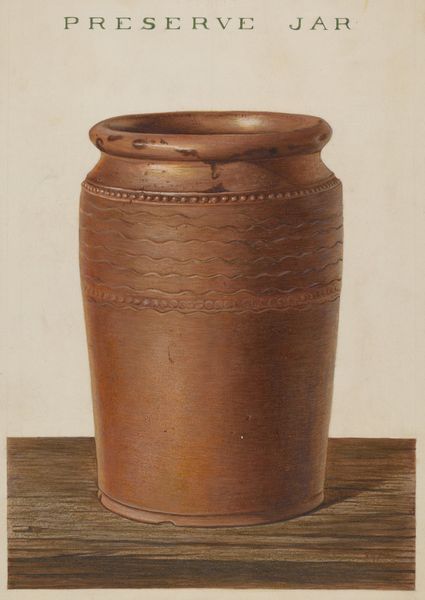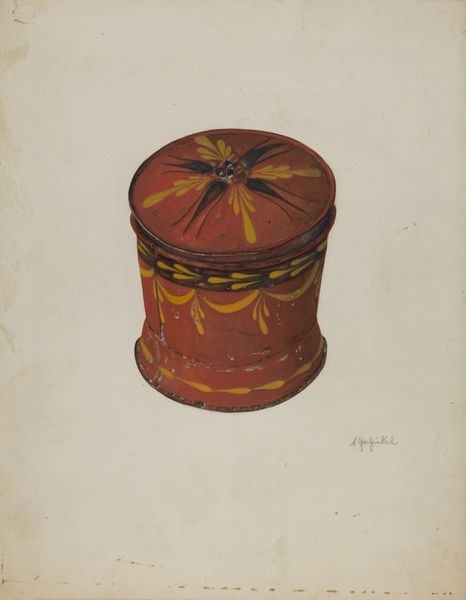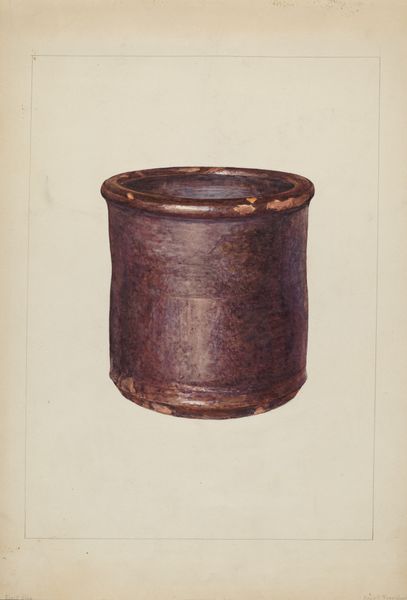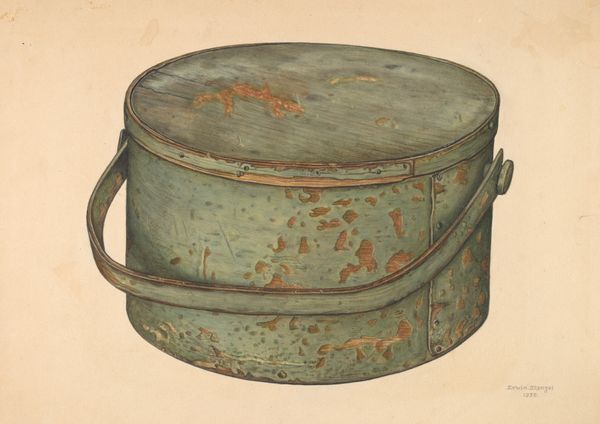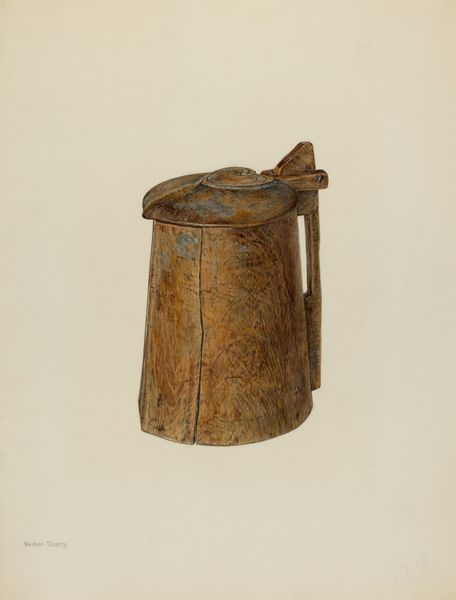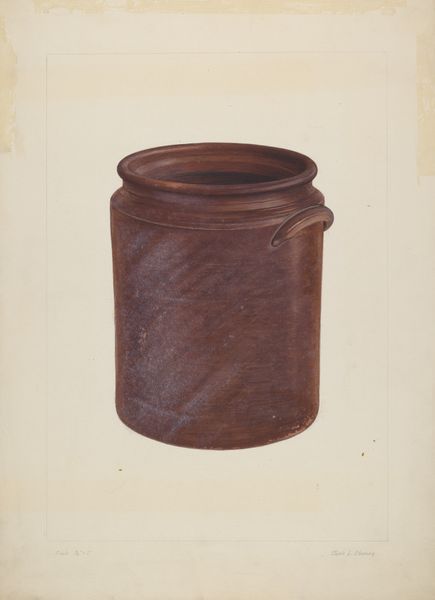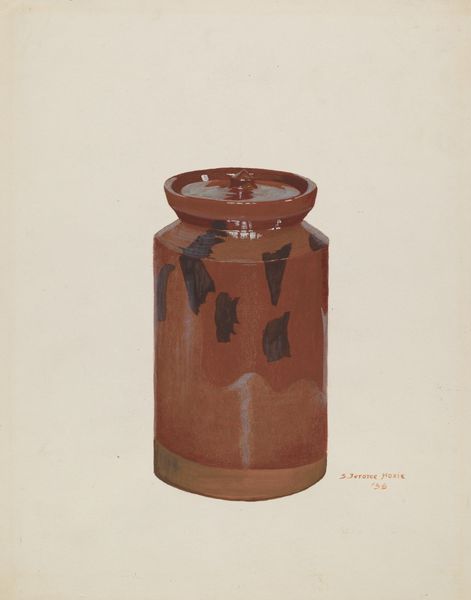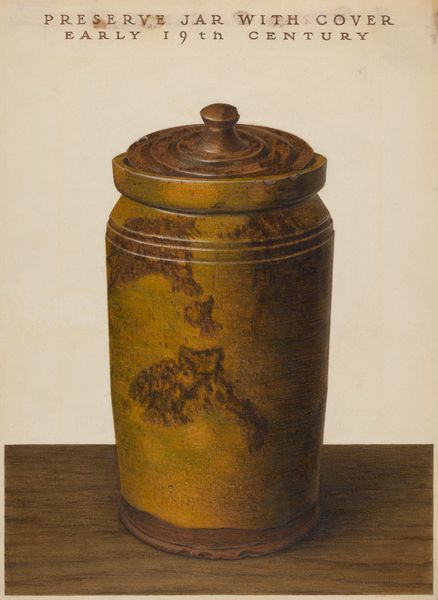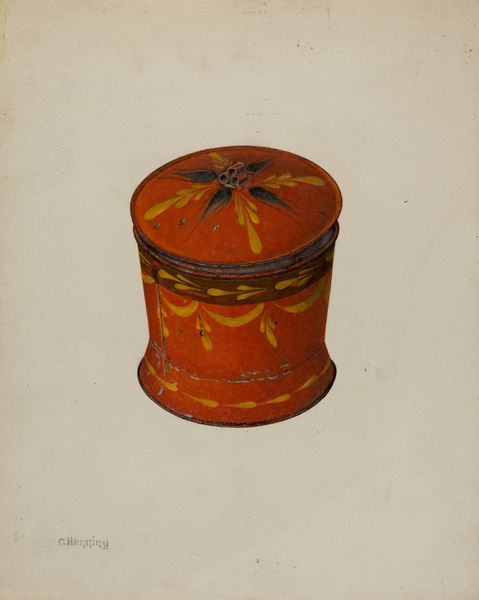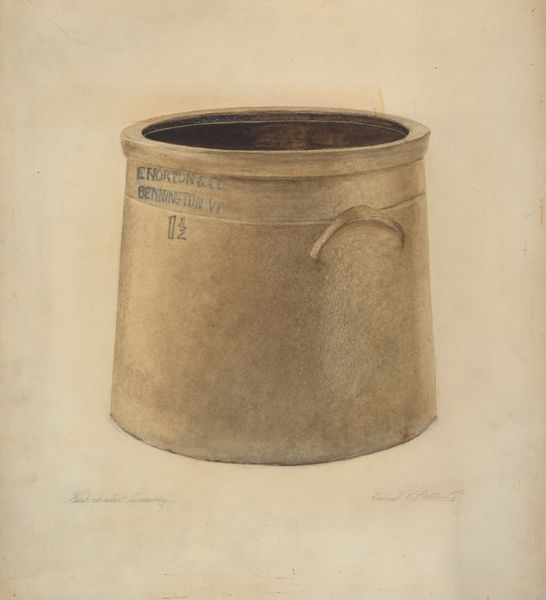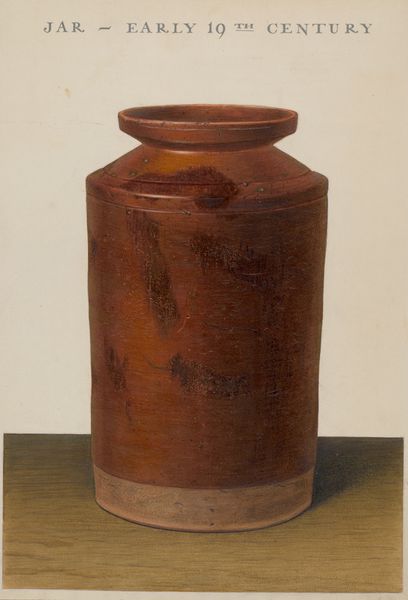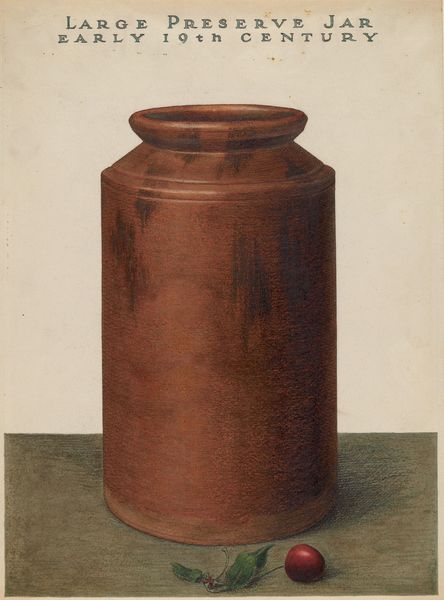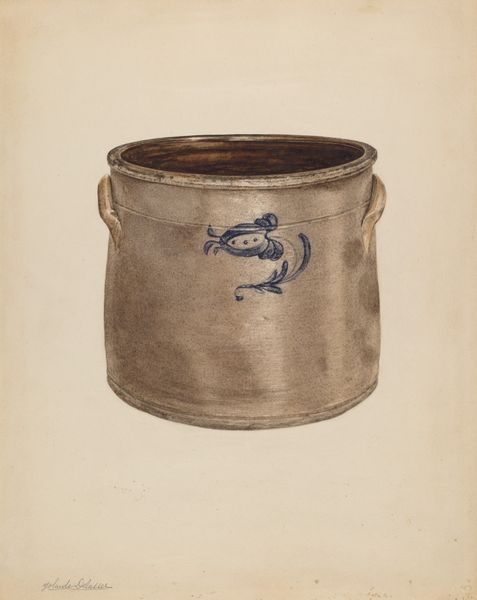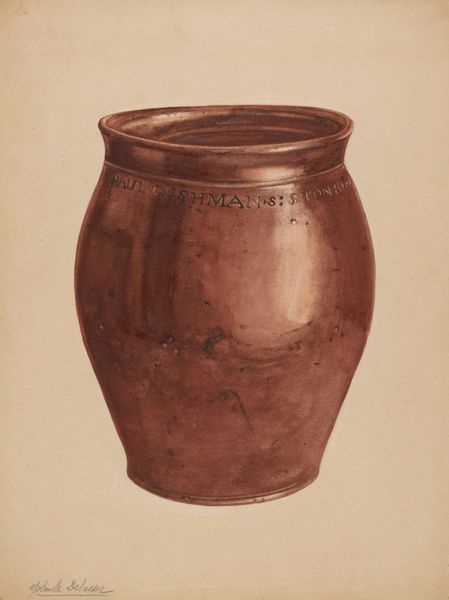
drawing, paper, watercolor
#
drawing
#
toned paper
#
charcoal drawing
#
paper
#
watercolor
#
folk-art
#
watercolour illustration
#
watercolor
Dimensions: overall: 41.5 x 33.7 cm (16 5/16 x 13 1/4 in.)
Copyright: National Gallery of Art: CC0 1.0
Curator: Here we have Eugene Shellady’s “Pa. German Pail and Cover,” made in 1938 using watercolor, charcoal, and drawing on paper. It's an understated work but with surprising vibrancy. Editor: My first thought is simplicity and utility—there’s a plainspoken quality to its rendering. Curator: Indeed. Shellady’s meticulous depiction provides a window into the folk-art tradition. These everyday objects, typically hand-painted and decorated by Pennsylvania Germans, reflect a deep connection to community and cultural heritage. How might this object speak to the concept of "use value" versus "exchange value"? Editor: Good question. Clearly the original pail itself had immense use value as a container, and by depicting it Shellady invites us to consider its physical qualities: the material from which it's built, the artisanal labor that went into it. The painted floral garlands break up the brown monochrome tones of the primary object to be captured. The paper looks coarse. Curator: Yes, the artwork invites contemplation of gender and labor; often women were primarily involved in the crafting of these utilitarian objects. Its simplicity reflects a self-sufficiency and ingenuity deeply tied to rural life, even as it risks romanticizing a very particular, arguably privileged, iteration of domesticity. Editor: Absolutely. The work resonates within a tradition of object-based study that elevates what some might see as mundane to the realm of historical artefact. I see that elevation as a form of honoring practical skills in a moment when we seem ever more abstracted from manual work. What labor might the materiality conceal, or make newly available for consideration? Curator: A necessary reminder, and a beautiful challenge. The intersectional narratives around class, race, and access certainly shift the idyllic notions surrounding these objects, demanding a far more comprehensive analysis. Thank you for pointing us in that direction! Editor: Of course. Examining the construction, the layers of craft and design embedded in the source object… I believe we gain valuable insight.
Comments
No comments
Be the first to comment and join the conversation on the ultimate creative platform.
